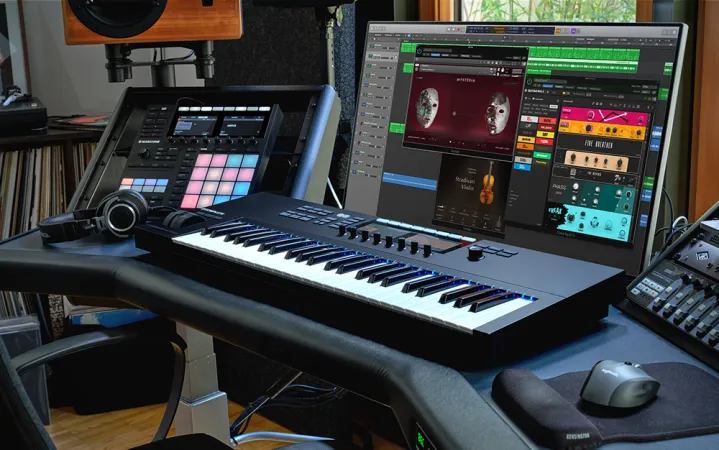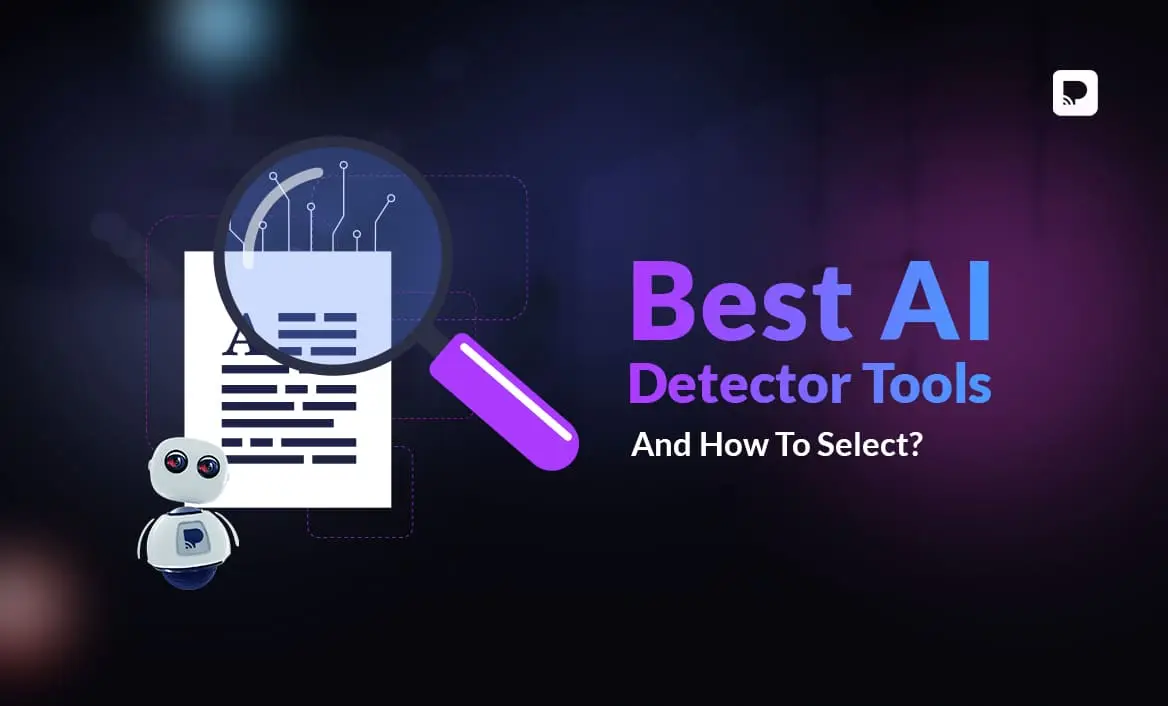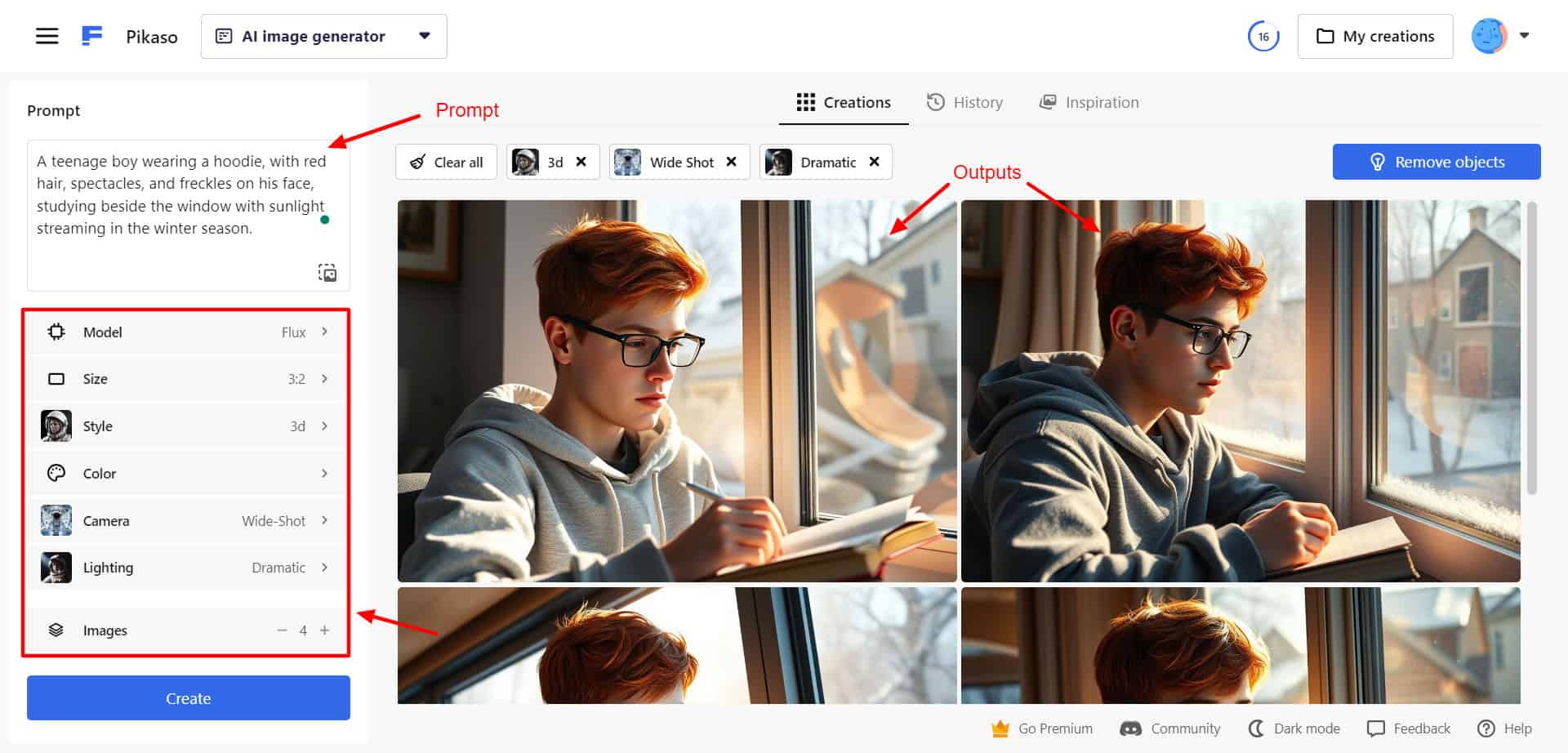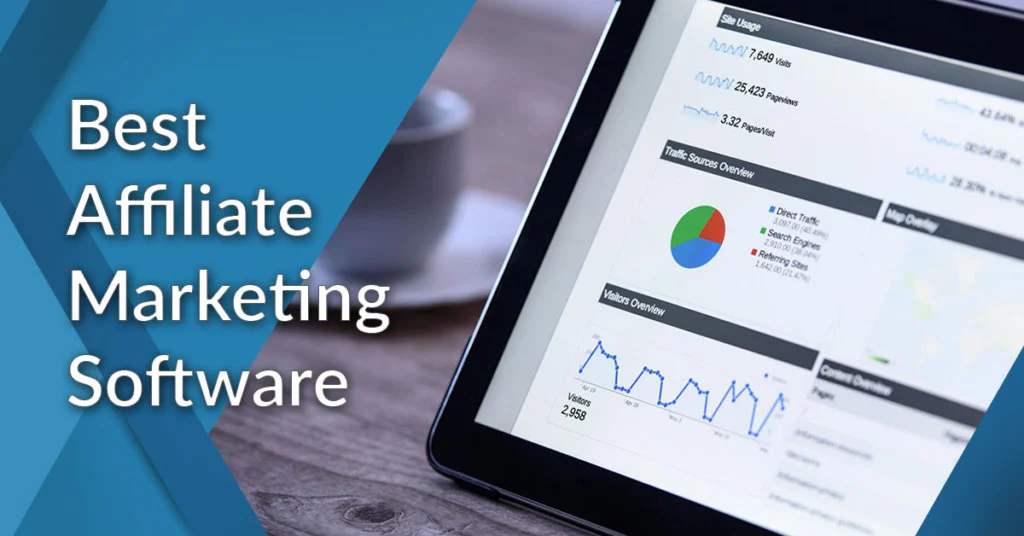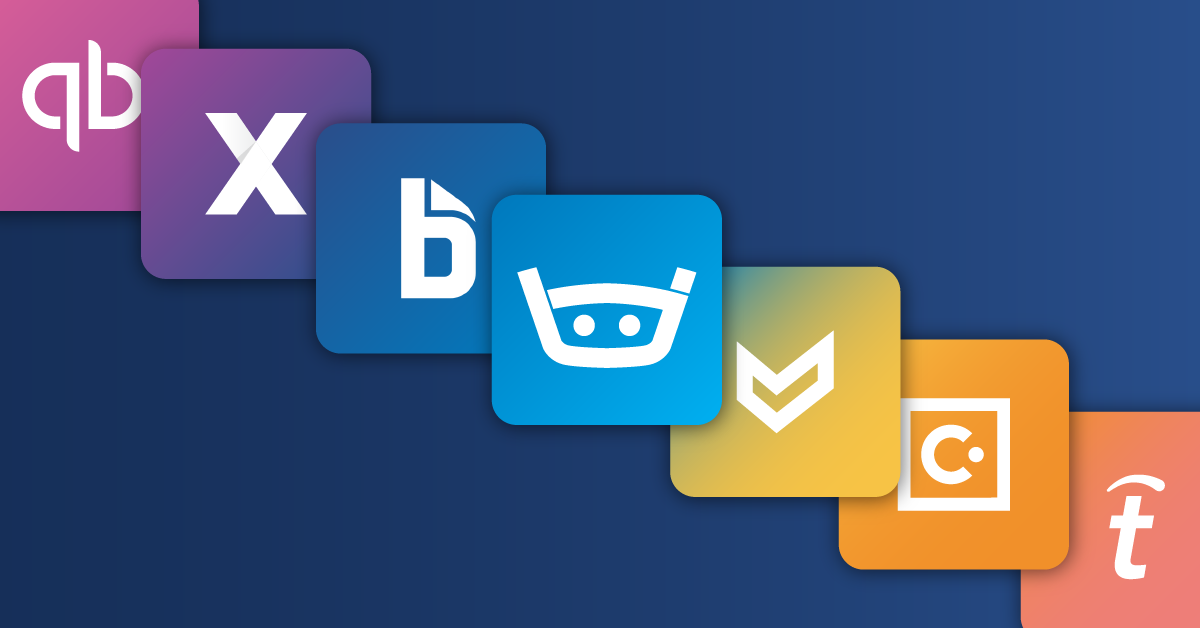Best Software Like Native Instruments: Ever felt limited by your current music production software? Or maybe you’re looking for something new beyond Native Instruments?
Native Instruments is likely the first thing that you think of when you consider digital music production.
It’s a monster, a fixture in most studios, and it’s no wonder why. Their software and hardware resonate with many tracks and they have a massive library of sounds and tools.
But not everybody is happy with such a popular and powerful software like Native Instruments.
You might be deterred by the high cost, or perhaps their workflow doesn’t match your own artistic process.
It may be that you want to be your own special thing, which is not available in their libraries. This is the part where we come in.
For example, if you’re interested in flight simulation, you can explore various options that suit your needs better.
We want to keep you updated on what exists, which is why we have provided you with a complete report on the other 9 Best Software Like Native Instruments.
These options are not improvised; instead, they are strong tools in their own way, each with its unique features, advantages, and recommended use cases.
This is our way of helping you add some new tools of sound to your sonic palette. We will find the ones that go just the way you want them to. Software holds a central position in music productivity, and it can uplift any level of expertise. Additionally, discovering design software might also be of interest.
Therefore, proper software can make all the difference whether you are a pro or a new musician. This guide has gone through a revision for 2025, combining the latest software advancements and user patterns.
The digital audio is constantly evolving in terms of technologies and features. We have ironed out all the difficulties to bring you, music enthusiasts, the most current and relevant information. This is so you can choose wisely your music production setup.
We know picking a suitable program is a significant investment, both in money and time. Our mission is to provide a way for you to get to the best alternatives possible without traveling to us.
Through them, let’s dig in and give key knowledge on ways you can change your music things and use new portals for your music.
9 Best Software Like Native Instruments:
- Spitfire Audio
- Spectrasonics
- IK Multimedia
- Arturia
- Toontrack
- Heavyocity
- EastWest
- Vienna Symphonic Library (VSL)
- UVI
Why find alternatives to Native Instruments?
When you dive into music production, you quickly realize that the tools you use shape your creative process. Native Instruments has long been a giant in this space, but it’s not always the right fit. Let’s break down why you might be looking for alternatives.
Cost Considerations:
Native Instruments offers a powerful suite of software, but pricing can be a major problem. You often invest in bundles or individual instruments, and these costs add up quickly. For many aspiring producers or those on a budget, this can be prohibitive.
Subscription models, like those offered by some competitors, provide a lower initial cost and access to a wider range of tools. This makes them attractive to those who prefer spreading out their expenses.
One-time purchases, while requiring a larger upfront investment, can be more cost-effective in the long run if you plan to use the software for years to come.
Workflow and User Interface Preferences:
Every producer has their own unique way of working. What feels intuitive to one person might feel clunky and inefficient to another.
Native Instruments, while powerful, has a particular workflow that doesn’t suit everyone. You might prefer a more visual, drag-and-drop interface, or perhaps a streamlined, minimalist design.
Specific Instrument and Sound Requirements:
Different genres and styles of music have different sounds. If you’re producing electronic music, you might need powerful synthesizers and drum machines. If you’re composing orchestral scores, you’ll need realistic string and brass instruments.
Native Instruments offers a wide range of sounds, but certain genres or styles are better served by specialized software.
System Compatibility and Performance:
Your computer’s performance plays a crucial role in your music production experience. Resource-intensive software can lead to crashes, glitches, and frustrating delays. You need software that runs smoothly on your system, whether you’re using Mac or Windows.
Concerns about CPU load and system resource management are common. You might search for “low CPU music software” to find options that won’t bog down your computer.
Checking “DAW system requirements” is also essential to ensure that the software you choose is compatible with your hardware. Your DAW should enhance your creativity, not a source of frustration.
The 9 Best Alternatives to Native Instruments in 2025
Now that you understand why you might seek alternatives, let’s explore nine of the best options available in 2025. Each of these software packages offers unique strengths and caters to different production styles and needs.
1. Spitfire Audio
Spitfire Audio is a leading developer of high-quality virtual instruments and sample libraries, specializing in orchestral and cinematic sounds.
It was founded by composers Paul Thomson and Christian Henson. The company collaborates with world-class musicians and engineers to capture the essence of real instruments and performances.
Their products are known for their pristine recordings, innovative scripting, and intuitive interfaces. This provides a rich palette for composers and producers to craft expressive and dynamic music.
Key Features:
- Premium Sample Libraries: Extensive collections recorded in renowned studios like AIR Lyndhurst.
- Diverse Instruments: Orchestral sections, solo instruments, pianos, and unique experimental sounds.
- Articulation Controls: Detailed articulations with customizable expression controls.
- Dedicated Plugins: Standalone interfaces like the Spitfire Audio App for easy installation and updates.
- Evo Grid Technology: Innovative tool for evolving textures and unpredictability in compositions.
Advantages:
- Exceptional Sound Quality: High-fidelity recordings that capture authentic instrument nuances.
- User-Friendly Interfaces: Intuitive design that facilitates quick workflow and creativity.
- Regular Updates and Expansions: Continuous addition of new libraries and features.
Disadvantages:
- High Cost: Premium pricing, which may be a barrier for budget-conscious users.
- Large File Sizes: Require substantial storage space and high-speed drives.
- Steep Learning Curve: Complex articulations and features may overwhelm beginners.
Best For: Spitfire Audio is ideal for composers, producers, and sound designers seeking top-tier orchestral and cinematic sounds. It’s suitable for film scoring, television, game music, and any project that demands realistic and emotive instrumentation. If you’re aiming to add depth and sophistication to your compositions, Spitfire Audio offers tools that can elevate your work to professional standards.
2. Spectrasonics
Spectrasonics is a leader in the virtual instrument industry, acclaimed for its flagship products Omnisphere, Trilian, and Keyscape.
These instruments are staples in modern music production, renowned for their vast sound libraries and powerful synthesis engines.
Spectrasonics combines high-resolution sampling with advanced synthesis techniques, allowing users to create everything from realistic acoustic instruments to otherworldly electronic sounds.
Their instruments are designed to inspire, offering endless sonic possibilities for musicians and producers across genres.
Key Features:
- Omnisphere Power Synth: A versatile instrument combining samples and synthesis.
- Keyscape Collection: A comprehensive library of meticulously sampled keyboards.
- Trilian Bass Module: Dedicated to acoustic and electric bass instruments.
- STEAM Engine: Proprietary technology powering dynamic sound manipulation.
- Hardware Synth Integration: Seamless control over software using hardware synths.
Advantages:
- Extensive Sound Library: Thousands of sounds covering a wide sonic spectrum.
- Innovative Synthesis: Advanced modulation and synthesis capabilities.
- High-Quality Samples: High-quality recordings deliver exceptional realism.
Disadvantages:
- Resource Demanding: Requires powerful hardware for optimal performance.
- Premium Pricing: Higher cost compared to some competitors.
- Complexity: The depth of features may overwhelm new users.
Best For: Spectrasonics instruments are best suited for producers, composers, and sound designers who demand versatility and depth in their tools. They’re suitable for creating rich textures, complex soundscapes, and unique tones. This makes them invaluable in genres ranging from electronic and ambient to jazz and cinematic music.
3. IK Multimedia
IK Multimedia offers a diverse suite of music production software and hardware solutions. Known for products like SampleTank, AmpliTube, and T-RackS, the company focuses on delivering professional-grade tools that are accessible to musicians at all levels.
SampleTank, their flagship workstation, provides a vast library of instruments spanning multiple genres. IK Multimedia’s commitment to innovation is evident in their integration of software with hardware controllers, mobile compatibility, and user-friendly interfaces.
Key Features:
- SampleTank: A comprehensive sound workstation with thousands of instruments.
- AmpliTube: Guitar amp and effects modeling software for realistic guitar tones.
- T-RackS: Mixing and mastering suite with high-quality processors.
- Custom Shop: In-app purchases for expanding your sound library.
- Mobile Apps: Music production tools available on iOS and Android platforms.
Advantages:
- Versatility: Wide range of sounds and effects suitable for various genres.
- Affordable Options: Offers both free versions and affordable expansions.
- Ease of Use: Intuitive interfaces that cater to beginners and professionals alike.
Disadvantages:
- In-App Purchases: Full functionality often requires additional purchases.
- Variable Sound Quality: Some users note sample quality inconsistencies.
- Resource Usage: Can tax system resources affect performance?
Best For: IK Multimedia is excellent for musicians seeking an all-in-one solution that bridges software and hardware. It’s particularly useful for guitarists using AmpliTube, and producers who want a comprehensive set of tools without investing in multiple software ecosystems. Its accessibility makes it suitable for hobbyists and professionals who value flexibility and integration.
4. Arturia
Arturia is celebrated for its meticulous software recreations of vintage synthesizers, keyboards, and drum machines. Their V Collection brings classic instruments like the Minimoog, ARP 2600, and Roland Jupiter-8 into the digital realm with stunning authenticity.
Arturia doesn’t just emulate the sounds but also captures the aesthetics and interfaces of these iconic machines. By combining analog warmth with digital convenience, Arturia provides musicians with tools that are both nostalgic and innovative.
Key Features:
- V Collection: A suite of over 20 legendary instruments emulated in software.
- Analog Lab: Combines all instruments into a single, easy-to-use interface.
- Authentic Sound Modeling: True Analog Emulation (TAE) technology for accurate sound.
- Customizable Parameters: Deep sound design capabilities with modulation and effects.
- Hardware Integration: Seamless control with Arturia’s keyboards and controllers.
Advantages:
- Historical Accuracy: Faithful recreations that sound and feel like the originals.
- Creative Flexibility: Modern features expand possibilities beyond vintage hardware.
- Regular Updates: Continual enhancements and additions to their instrument lineup.
Disadvantages:
- System Requirements: This application requires significant processing power for smooth operation.
- Learning Curve: Complex interfaces may be challenging for newcomers.
- High Initial Investment: The full collection costs substantially.
Best For: Arturia is suitable for synth enthusiasts, electronic music producers, and anyone passionate about vintage sounds. It’s ideal for those who want the charm of classic instruments without the maintenance and cost of rare hardware. Whether you’re exploring retro genres or integrating timeless tones into modern productions, Arturia provides a bridge between the past and present.
5. Toontrack
Toontrack specializes in virtual drum and percussion instruments, offering tools like EZdrummer and Superior Drummer. These software solutions provide realistic drum sounds and grooves that are essential for modern music production.
With meticulously recorded samples and an extensive MIDI library, Toontrack enables users to create lifelike drum tracks without a live drummer. Their products cater to both beginners and professionals, simplifying the process of crafting dynamic and authentic rhythms.
Key Features:
- EZdrummer: User-friendly virtual drum instrument for quick songwriting.
- Superior Drummer: Advanced features for customizing and mixing.
- Extensive MIDI Libraries: Pre-made grooves and fills across various genres.
- EZX and SDX Expansions: Additional sound libraries to expand your sonic palette.
- Mix Presets: Professionally designed settings for instant great-sounding drums.
Advantages:
- Realistic Sounds: High-quality samples that emulate real drum performances.
- Ease of Use: Intuitive interfaces make drum programming accessible.
- Flexibility: Customize kits, mic placement, and mixing parameters.
Disadvantages:
- Additional Costs: Expansions and upgrades can increase overall expenses.
- Limited to Drums: Focused solely on percussion, requiring no other software for melodies.
- Resource Intensive: Requires adequate system resources for optimal performance.
Best For: Toontrack is ideal for producers, songwriters, and engineers who need professional drum tracks without the hassle of recording live drums. It’s especially useful in genres like rock, metal, pop, and country, where authentic drum sounds are crucial. Whether you’re sketching song ideas or finalizing productions, Toontrack provides reliable and high-quality rhythmic foundations.
6. Heavyocity
Heavyocity offers a range of cinematic and hybrid virtual instruments designed to add depth, drama, and intensity to compositions. Their products, such as the Damage series, Gravity, and Mosaic, are staples for film, TV, and game composers.
Heavyocity blends organic samples with cutting-edge sound design to create unique textures and effects. Their focus on innovation and emotion results in tools that inspire and enable composers to craft compelling narratives through sound.
Key Features:
- Cinematic Percussion: The Damage series provides hard-hitting drums and impacts.
- Evolving Textures: Gravity offers dynamic pads and risers that add movement.
- Hybrid Instruments: The Mosaic series blends traditional sounds with modern elements.
- Intuitive Interface: User-friendly design with powerful sound-shaping controls.
- Advanced Effects: Built-in effects like Punish and Twist for creative processing.
Advantages:
- Unique Sounds: Offers fresh and innovative sounds that stand out in compositions.
- Expressive Control: Tools that respond dynamically to playing style and modulation.
- Quality Production: High production value with professionally recorded content.
Disadvantages:
- Niche Focus: Geared towards specific genres, may not be versatile for all users.
- Requires Full Kontakt: Some libraries need the full version of Native Instruments Kontakt.
- Costly: Premium products with pricing that reflects their specialized nature.
Best For: Heavyocity is suitable for composers and producers working in cinematic, trailer, and interactive media music. It’s ideal for those looking to infuse their work with atmosphere, tension, and modern sound design elements. If you’re aiming to push creative boundaries and evoke strong emotions, Heavyocity provides the tools to make a powerful impact.
7. EastWest
EastWest is a prominent producer of high-quality virtual instruments, offering an extensive catalog of orchestral, choir, ethnic, and contemporary music libraries.
Their flagship product, the EastWest Hollywood Orchestra, is revered for its comprehensive articulations and realistic sound. Utilizing state-of-the-art recording techniques and venues, EastWest captures live performances.
The company also provides the ComposerCloud subscription service, granting access to their entire collection for a monthly fee.
Key Features:
- Hollywood Orchestra: A detailed orchestral library with individual sections and instruments.
- PLAY Engine: Proprietary software offering efficient performance and control.
- Symphonic Choirs: Features word-building capabilities for realistic choir parts.
- Ethnic Libraries: Includes rare instruments from Silk Road, Ra, and other collections.
- ComposerCloud Subscription: Affordable access to the complete EastWest catalog.
Advantages:
- Extensive Libraries: A vast array of instruments covering multiple genres and styles.
- Professional Quality: High-end recordings suitable for film and television scoring.
- Flexible Access: Subscription model makes professional tools more accessible.
Disadvantages:
- High System Requirements: Demands significant computing power and storage.
- Proprietary Software: PLAY engine may lack some features compared to other platforms.
- Learning Curve: Comprehensive features may require time to fully understand.
Best For: EastWest is ideal for composers, arrangers, and producers seeking a broad selection of realistic virtual instruments. It’s particularly suited to scoring, orchestration, and productions that require authentic acoustic sounds. If you’re working on projects that demand professional-grade orchestral and ethnic instruments, EastWest offers a wealth of resources to bring your music to life.
8. Vienna Symphonic Library (VSL)
Vienna Symphonic Library is renowned for its meticulous orchestral sample libraries and sophisticated software solutions.
VSL provides composers with an expansive collection of instruments recorded in their custom-built Silent Stage, ensuring pristine sound quality free from ambient noise.
Their products, such as Vienna Instruments and Vienna Ensemble Pro, offer unparalleled control over articulations and performance nuances.
VSL is committed to delivering tools that enable composers to achieve unparalleled realism and expressiveness in their virtual orchestrations.
Key Features:
- Comprehensive Samples: Extensive articulations and velocities for detailed performance.
- Vienna Instruments Pro: Enhanced player with advanced performance features.
- Vienna Ensemble Pro: Network-capable host for complex projects and resource management.
- MIR Pro: Revolutionary Multi-Impulse Response mixing and reverberation engine.
- Dimension Series: Instruments recorded with individual microphones for ultimate control.
Advantages:
- Exceptional Realism: Unrivalled attention to detail in sample recording and playback.
- Flexible Configuration: Modular approach allows customization of your library.
- Professional Tools: Advanced software designed for serious composers and producers.
Disadvantages:
- Premium Pricing: High-quality products at a cost that reflects their value.
- Complexity: Advanced features may be daunting for beginners.
- Hardware Demands: Requires robust systems with significant RAM and storage.
Best For: VSL is best suited to professional composers, orchestrators, and arrangers who demand the highest level of authenticity in their virtual instruments. It’s suitable for classical compositions, film scoring, and any project where nuanced orchestral performance is critical. If precision and depth are your priorities, VSL provides the tools to realize your musical vision.
9. UVI
UVI offers a broad range of virtual instruments, soundware, and effects, blending vintage and modern sounds with innovative technology. Their flagship product, Falcon, is a hybrid instrument that combines sampling and synthesis in a powerful, unified environment.
UVI is known for its beautifully designed interfaces and high-quality sounds, covering everything from classic analog synths to orchestral instruments. They focus on versatility and creativity, providing tools that cater to both sound designers and traditional musicians.
Key Features:
- Falcon: Advanced hybrid instrument with extensive modulation and effects.
- Vintage Vault: Collection of over 50 instruments emulating classic hardware.
- Workstation 3: A free player and library providing sounds.
- Expansion Soundbanks: Regular releases expanding sonic possibilities.
- Efficient Performance: Optimized for low CPU and RAM usage without compromising quality.
Advantages:
- Versatile Sounds: Wide array of instruments suitable for multiple genres.
- Creative Freedom: Deep sound design options for unique sonic exploration.
- Intuitive Design: User-friendly interfaces that enhance workflow.
Disadvantages:
- Requires iLok Account: Some users may find the copy protection system inconvenient.
- Learning Curve: Advanced Falcon features may take time to master.
- Lack of Industry Presence: May not be as widely recognized as some competitors.
Best For: UVI is great for producers, composers, and sound designers looking for flexible and inspiring tools. It’s ideal for those who want to explore both traditional and innovative sounds without being confined to a specific genre or style. If you’re seeking a balance between ease of use and deep customization, UVI provides a platform to unleash your creativity.
Each of these software alternatives offers unique strengths and features that can enrich your music production journey.
By exploring these options, you can find tools that resonate with your artistic goals and enhance your ability to create compelling, professional-quality music.
Whether you’re aiming for cinematic grandeur, electronic innovation, or authentic acoustic sounds, these software solutions provide a wealth of possibilities to fuel your creativity.
Key Considerations When Choosing Your Alternative
Choosing the right music production software can feel overwhelming, but focusing on a few key considerations will make the process much smoother. Here’s a breakdown of what you should keep in mind:
Your Genre and Production Style:
The music you create should guide your software choice. Different genres have different needs, and certain DAWs excel in specific areas. If you’re producing electronic music, Ableton Live’s Session View and powerful warping capabilities might be ideal.
For hip-hop, FL Studio’s pattern-based sequencer and intuitive piano roll are hard to beat. If you’re composing orchestral scores, Logic Pro’s comprehensive library of virtual instruments and scoring features could be the perfect fit.
Tailor your software choice to your genre. Matching software features to your individual production workflows is also vital. Do you prefer a linear workflow or a experimental, non-linear approach? Consider how the software’s interface and tools align with your creative process.
Budget and Long-Term Investment:
Music software can represent a significant financial investment. Analyze pricing models carefully. Some DAWs offer one-time purchases, while others use subscription models. Consider the long-term cost and whether you prefer to pay upfront or spread out your expenses.
Also, factor in upgrade costs. Some developers offer free updates, while others charge for major releases. Think about the long-term value and scalability of the software. Will it grow with you as your skills and needs evolve?
Learning Curve and Community Support:
Every DAW has a learning curve. Some are more intuitive than others, while others require more time and effort to master. Consider your experience level and how much time you’re willing to invest in learning the software.
Evaluating the software’s user interface and learning resources is vital. Look for tutorials, documentation, and online courses. Assessing the availability of forums, user groups, and community support is also important.
A strong community can provide valuable assistance and inspiration. If you’re looking to start quickly look for an “easy to learn DAW.” A strong “music production community” can make a big difference in your learning journey.
Hardware Integration and Compatibility:
Your music production setup likely includes MIDI controllers, audio interfaces, and other hardware. Ensuring compatibility with your existing equipment is essential.
Check the software’s specifications and reviews to verify compatibility. Seamless integration with your existing studio setup will prevent many headaches.
Tips for Transitioning to Your New Music Production Software
Switching to a new DAW can feel daunting, but with a strategic approach, you’ll create music in no time. Here’s how to make the transition smooth and efficient:
Start with Tutorials and Online Resources:
Every DAW comes with its own unique features and workflows. To get started, utilize the official documentation provided by the software developer. Many developers offer detailed user manuals, video tutorials, and online courses.
These resources are designed to help you understand the software’s capabilities and learn how to use its various tools effectively. Leveraging community forums and user groups can also be helpful.
You can find answers to specific questions, learn tips and tricks from experienced users, and connect with other musicians who are also transitioning to the new software.
Begin with Simple Projects:
Don’t jump into a complex project right away. Start with smaller, manageable projects that allow you to explore the software’s basic features and workflows.
Build your proficiency by experimenting with different tools and techniques. This approach allows you to learn at your own pace and avoid overwhelm. Experimenting with different features and workflows is key to discovering what works best for you.
Try creating a simple beat, recording a single instrument, or mixing a few tracks. These small projects will help you learn the software’s interface and functionality.
Migrate Your Existing Projects (Where Possible):
If you have existing Native Instruments projects you want to continue working on, explore the possibility of migrating them to your new DAW.
Some DAWs offer compatibility with common file formats, such as MIDI and WAV, which can facilitate the transfer of project data.
However, be aware that compatibility issues can arise due to differences in plugin formats, routing, and other software-specific features.
Before migrating a complex project, it is advisable to test the process on a smaller, less critical project. This will help you identify potential issues and develop strategies for addressing them.
Customize Your Workflow:
One of the best ways to optimize your music production experience is to customize your workflow. Most DAWs allow you to set up shortcuts, create templates, and customize layouts to suit your individual preferences.
Take the time to explore these customization options and tailor the software to your specific needs. Setting up shortcuts for frequently used commands can significantly speed up your workflow.
Creating templates for common project setups can save you time and ensure consistency. Customizing layouts allows you to arrange software windows and panels in a way that maximizes efficiency.
Optimizing your “music production workflow optimization” is essential for a smooth and productive experience.
The Future of Music Production Software: 2025 and Beyond
Music production landscape is constantly evolving, driven by technological advancements and the changing needs of creators. As we look towards 2025 and beyond, several key trends are shaping the future of music production software.
AI and Machine Learning Integration:
Artificial intelligence (AI) and machine learning are rapidly transforming the way we create music. We are seeing a growing role for AI in music creation, composition, and mixing.
AI-powered features like automatic mastering, sound generation, and intelligent arrangement tools are becoming increasingly common.
These tools can help you streamline your workflow, generate new ideas, and achieve professional-sounding results.
For instance, AI algorithms can analyze your tracks and suggest optimal EQ settings, compression, and other mixing parameters.
AI sound generation tools can create unique sounds and textures, expanding your sonic palette. Intelligent arrangement tools can help you structure your compositions and create compelling arrangements.
Cloud-Based Collaboration and Accessibility:
Cloud-based DAWs and collaborative platforms make music production more accessible and collaborative than ever before.
These platforms allow you to work on projects remotely, share files seamlessly, and collaborate with other musicians from anywhere in the world. The benefits of remote collaboration are significant.
You can work with artists and producers from different locations, share ideas in real-time, and streamline the production process.
Cloud-based platforms also offer universal accessibility, allowing you to access your projects from any device with an internet connection.
Immersive Audio and Spatial Sound:
The demand for immersive audio experiences is growing rapidly. Formats like Dolby Atmos and 360 audio are becoming increasingly popular, offering listeners a more engaging and realistic listening experience.
Music production software is adapting to this trend by incorporating features that support spatial audio production and mixing.
These features allow you to create immersive soundscapes, place sounds in three-dimensional space, and deliver a truly captivating listening experience.
Cross-Platform Compatibility and Mobile Production:
The ability to create music on the go is becoming increasingly important. Music production software evolves to work seamlessly across desktops, laptops, tablets, and smartphones. This cross-platform compatibility allows you to start a project on one device and continue working on it on another.
Mobile music production is on the rise, with many DAWs offering mobile versions or companion apps. These apps allow you to capture ideas, record audio, and even mix tracks on your mobile device.
Conclusion
Choosing the right music production software is pivotal to shaping your creative process and achieving your musical aspirations.
While Native Instruments has long been a powerful player in the industry, exploring alternatives can provide tools that better align with your specific needs and preferences.
Each of the highlighted alternatives Spitfire Audio, Spectrasonics, IK Multimedia, Arturia, Toontrack, Heavyocity, EastWest, Vienna Symphonic Library, and UVI offers unique strengths.
These range from high-quality orchestral libraries and innovative sound design tools to intuitive interfaces and flexible pricing models.
By selecting software that resonates with your genre and production style, you can enhance your music-making experience and unlock new creative possibilities.
When choosing your alternative, consider key factors such as your genre and production style, budget, long-term investment, learning curve, community support, and hardware compatibility.
Tailoring your software choice to your musical needs ensures a seamless and productive workflow. Budget considerations are equally important, as some software offers subscription models and one-time purchases that suit different financial strategies.
As you transition to new music production software, start with tutorials and simple projects to build proficiency.
Experimenting with various features and workflows will help you customize the software to your needs. Migrating existing projects, where possible, and customizing your workflow can further streamline the process.
Looking towards the future, music production software is evolving with trends like AI and machine learning integration, cloud-based collaboration, immersive audio, and cross-platform compatibility.
Embracing these advancements can elevate your creative projects and keep you at the forefront of the industry.
By considering these factors and exploring the best alternatives to Native Instruments, you can find the perfect tools to enhance your music production journey and achieve professional-quality results.
What should I consider when choosing a music production software alternative?
When choosing a music production software alternative, consider factors such as your genre and production style, budget, long-term investment, learning curve, community support, and hardware compatibility. Tailoring your software choice to your musical needs ensures a seamless and productive workflow. Additionally, staying informed about industry trends and advancements, like AI integration, cloud-based collaboration, and immersive audio, can help you select the best tools to enhance your creative projects.
How can I choose the best alternative to Native Instruments for my needs?
When choosing an alternative to Native Instruments, consider your genre and production style, budget, long-term investment, learning curve, community support, and hardware compatibility. Research each software’s key features and strengths to find the best fit for your creative projects.
What advantages does UVI offer over Native Instruments for sound design?
UVI’s Falcon is an advanced hybrid instrument that combines sampling and synthesis in a powerful, unified environment. UVI provides versatile sound design tools, beautifully designed interfaces, and deep customization options, making them suitable for multiple genres and styles.
How does EastWest compare to Native Instruments in terms of ethnic and world instruments?
EastWest offers extensive libraries of ethnic and world instruments, such as Silk Road and Ra, providing authentic sounds for various cultural music styles. Their high-end recordings and detailed articulations make them ideal for composers and producers seeking unique and diverse sound palettes.
What are the key features of Spectrasonics compared to Native Instruments?
Spectrasonics flagship products, including Omnisphere, Trilian, and Keyscape, offer a versatile blend of samples and synthesis. Their extensive sound library and advanced modulation capabilities provide dynamic sound manipulation and seamless hardware synth integration, making them valuable for various genres.
Which software offers unique cinematic and hybrid sounds as alternatives to Native Instruments?
Heavyocity provides cinematic and hybrid virtual instruments that add depth and intensity to compositions. Their products, like the Damage series and Gravity, blend organic samples with innovative sound design, making them ideal for film, TV, and game composers.
Are there any alternatives to Native Instruments for realistic drum sounds?
Toontrack is a top alternative for realistic drum sounds, providing virtual drum instruments like EZdrummer and Superior Drummer. Their high-quality samples and extensive MIDI libraries make drum programming accessible for both beginners and professionals.
What alternatives to Native Instruments are best for electronic music production?
Arturia is a great alternative for electronic music production, offering meticulous recreations of vintage synthesizers in their V Collection. Spectrasonics’ Omnisphere is also a powerful tool for creating a wide range of electronic sounds and textures.
Which software offers high-quality orchestral libraries like Native Instruments?
Spitfire Audio and Vienna Symphonic Library (VSL) are known for their high-quality orchestral libraries. Spitfire Audio offers premium sample libraries with detailed articulations and customizable controls, while VSL provides meticulous orchestral samples with advanced performance features.
What are some cost-effective alternatives to Native Instruments?
IK Multimedia is a cost-effective alternative, offering a range of music production tools like SampleTank, AmpliTube, and T-RackS. They provide both free versions and affordable expansions, making professional-grade tools accessible to musicians at all levels.
Why might I look for alternatives to Native Instruments?
Users may seek alternatives to Native Instruments due to cost considerations, specific workflow preferences, or the need for different sound libraries. Alternatives can offer more affordable pricing, intuitive interfaces, and specialized instruments tailored to various genres and production styles.

